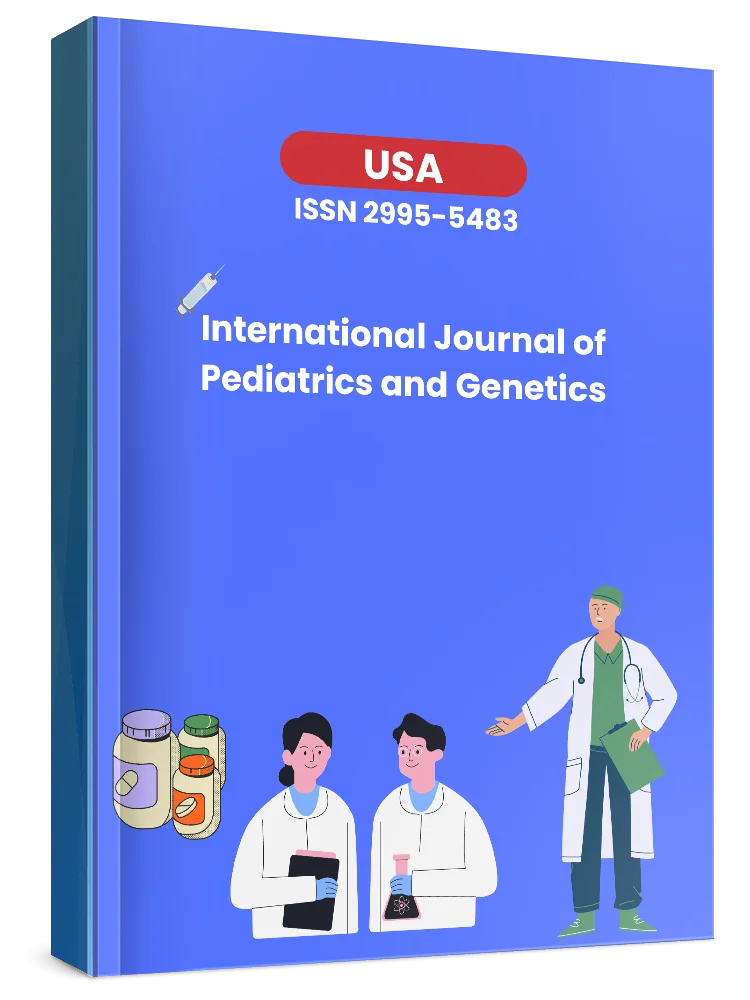Highlighting the Importance of Education and Follow-Up Care Strategies to Prevent Future Emergencies in Children's Health
Keywords:
Pediatric Health Emergencies, Caregiver Education, Follow-Up Care, And Preventive StrategiesAbstract
Background: Preventable pediatric health emergencies, such as asthma exacerbations, vaccine-preventable infections, and uncontrolled chronic conditions, remain a significant global health burden. Despite advancements in medical care, gaps persist in caregiver education and continuity of follow-up, contributing to avoidable hospitalizations and healthcare costs.
Aim: To assess the effectiveness of caregiver education programs and systematic follow-up care in preventing recurrent pediatric emergencies and improving long-term health outcomes.
Methodology: A prospective intervention study was conducted with 82 pediatric patients (aged 0–12 years) and their caregivers over six months. Pre- and post-intervention data were collected through medical records, caregiver surveys, and follow-up adherence logs, included customized education sessions (recognition of warning signs, medication adherence, and preventive care), in-person and telehealth visits, and benefit analysis of emergency care utilization.
Results: Post-intervention data revealed significant improvements; 64.6% reduction in emergency visits (from 147 to 52 incidents), 71.4% fewer asthma-related emergencies, 77.8% decline in diabetic complications, 78% follow-up adherence, with 90.7% caregiver satisfaction in telehealth components, and 82.9% of caregivers demonstrated improved confidence in managing their child’s health.
Conclusion: Integrated education and follow-up care strategies significantly reduce preventable pediatric emergencies, enhance caregiver competency, and lower healthcare costs. These findings advocate for policy-level implementation of such interventions in primary and tertiary care settings to promote sustainable child health outcomes.
References
1. Washington, D.C: National Academies Press; 2011. National Research Council (U.S.). Committee on National Earthquake Resilience – Research Implementation and Outreach. National Research Council (U.S.). Committee on Seismology and Geodynamics. National Research Council (U.S.). Board on Earth Sciences and Resources. National Earthquake Resilience: Research, Implementation, and Outreach.
2. Adiyoso W, Kanegae H. Vol. 6. Indonesia: Disaster Mitigation of Cultural Heritage and Historic Cities; 2012. The Effect of Different Disaster Education Programs on Tsunami Preparedness among Schoolchildren in Aceh; pp. 165–172.
3. Aldrich N, Benson WF. Disaster preparedness and the chronic disease needs of vulnerable older adults. Prev Chronic Dis. 2008;5:A27.
4. Morris KA, Edwards MT. Disaster risk reduction and vulnerable populations in Jamaica: Protecting children within the comprehensive disaster management framework. Child Youth Environ. 2008;18:389–407.
5. Tuladhar G, Yatabe R, Dahal RK, Bhandary NP. Assessment of disaster risk reduction knowledge of school teachers in Nepal. Int J Health Syst Disaster Manag. 2015;3:20.
6. Collymore, J. Disaster management in the Caribbean: Perspectives on institutional capacity reform and development. Environ Hazards. 2011;10:6–22.
7. Izadkhah YO, Hosseini M. Disaster preparedness strategy through earthquake education and training of classified target groups. In Proceedings of The 2nd International Conference on Integrated Natural Disaster Management (INDM), Tehran: United Nations International Strategy for Disaster Reduction, 2007 Feb.
8. Muzenda-Mudavanhu C, Manyena B, Collins AE. Disaster risk reduction knowledge among children in Muzarabani district, Zimbabwe. Nat Hazards. 2016;84:911–31.
9. Bosschaart A, van der Schee J, Kuiper W, Schoonenboom J. Evaluating a flood-risk education program in the Netherlands. Stud Educ Eval. 2016;50:53–61.
10. Brodie M, Weltzien E, Altman D, Blendon RJ, Benson JM. Experiences of hurricane Katrina evacuees in Houston shelters: Implications for future planning. Am J Public Health. 2006;96:1402–8.
11. Morrow BH. Identifying and mapping community vulnerability. Disasters. 1999;23:1–8.
12. Kagawa F, Selby D. Ready for the storm: Education for disaster risk reduction and climate change adaptation and mitigation1. J Educ Sustain Dev. 2012;6:207–17.
13. Rohrmann B, editor. Risk Perception, Risk Attitude, Risk Communication, Risk Management: A Conceptual Appraisal. Conference Presented at the International Society of Emergency Management. 2008.
14. Center AD. A Study on the Impact of Disasters on the Education Sector in Cambodia. Bangkok: Asian Disaster Preparedness Center; 2008.
15. UNICEF. Disaster Risk Reduction and Education. New York: UNICEF; 2011.
16. Wisner B. A Review of the Role of Education and Knowledge in Disaster Risk Reduction. 2006
17. Grantham-McGregor S. et al. Developmental potential in the first 5 years for children in developing countries. Lancet 2007; 369: 60–70.
18. United Nations Educational, Scientific and Cultural Organization (UNESCO) (2011). Education for All Global Monitoring Report. Geneva, UNESCO.
19. Bryce, J. et al. Maternal and child nutrition: effective action at the national level. Lancet 2008: 371: 510–26 Victora, C. et al. Maternal and child under-nutrition: consequences for adult health and human capital. Lancet 2008; 371: 340–57.
20. Plan UK (2010). Child-centred disaster risk reduction: building resilience through participation. Lessons from Plan International. London, Plan UK.
21. United Nations Children’s Fund (UNICEF) (2010). Disaster risk reduction and early childhood development. A special focus on the countries of Central Asia and the South Caucasus. Geneva, UNICEF.
22. Plan International Australia/CBM-Nossal Institute Partnership in Disability and Development (2011). Disability inclusion in ECCD. Factsheet. Melbourne, Plan International Australia.
23. Baxter P and Bethke L (2009). Alternative education: Filling the gap in emergency and postconflict situations. Paris, International Institute for Education Planning.
24. Inter-Agency Network for Education in Emergencies (2010). Minimum standards for education: Preparedness, response, recovery.
25. United Nations Children’s Fund (2010). Education in emergencies training.






